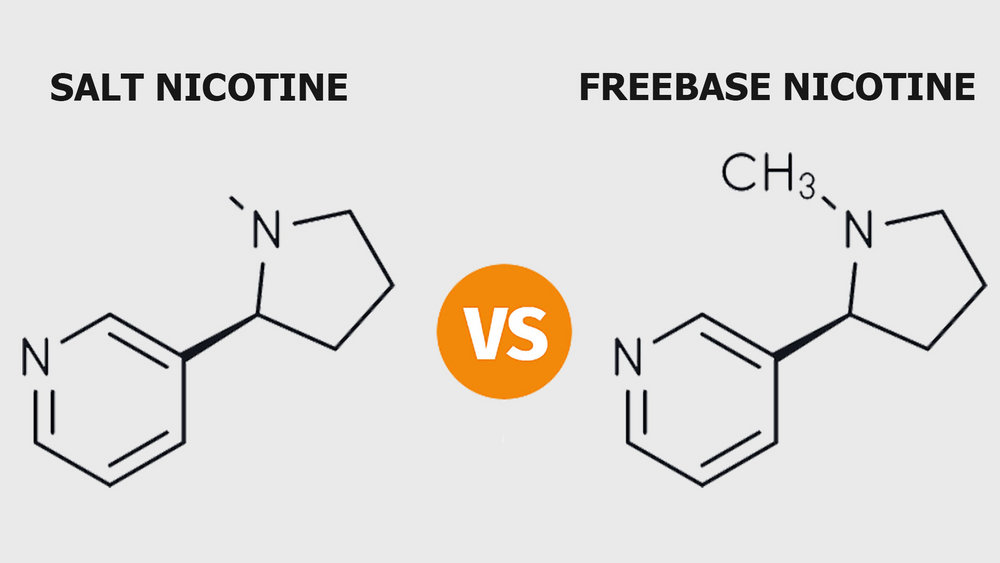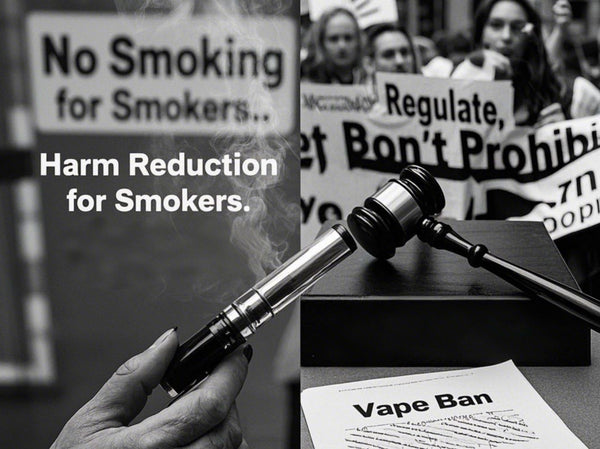
Like all different technologies, trends, or hobbies, Vaping has very basic roots. We have come a long way. Since the beginning, those cheap cigarette oils, such as cigarettes and electronic cigarette pens, have provided us with crude oil and electronic liquids containing PG (Propylene Glycol).

However, larger capacity ratios are not always better. Of course, many of us like the feeling, taste, and cloud effect of making high VG (Vegetable Glycerin) e-juice in sub-ohm atomizing devices. But for those who are only interested in nicotine consumption, using a high concentration of VG-based e-liquid is like driving a Ferrari limousine, but it is unrealistic for everyone.
What is nicotine salt? The history of nicotine salts
Nicotine salts, one of the main components in e-cigs, are more penetrating than regular nicotine, delivering nicotine to the bloodstream in less time and with little irritation to the user's throat.
The nicotine used to exist in a free state. After the atomization of the common free base nicotine through the electronic equipment, very little of it can effectively reach the blood, and most of the nicotine is converted into the excessive stimulation of the throat, which is not ideal for the delivery of the blood nicotine content. The nicotine is unpleasant and irritates the throat, making it difficult for users to get the same satisfaction as smoking a real cigarette.
Nicotine salts solve these problems well. In 2015, researchers discovered that adding benzoic acid to neutralize the acid-base allowed more of the free nicotine base to remain in the solvent in a stable state, resulting in the creation of nicotine salts that brought their inventor, the JUUL Lab, to the front.
The advent of nicotine salts ushered in a new era for the e-cigarette industry.
Nicotine salts are a more stable compound of nicotine and other organic ingredients. It greatly increases the efficiency of nicotine delivery, allowing users to better absorb and experience a pleasure.
In contrast, nicotine salts are more easily absorbed and excreted than nicotine, have less impact on the body, and have a longer shelf life.
At the same time, the color and taste of nicotine salt itself are very light, which will not affect the reduction degree of tobacco, fruit, and other flavors, and the taste is smooth, improving the user's sense of experience.
According to Public Health England, e-cigarettes are 95% less harmful than traditional cigarettes, and using them as an alternative significantly reduces the health risks to smokers. But for a long time after e-cigarettes were introduced, only 6 percent of smokers in the United States succeeded in switching to e-cigarettes, even though 60 percent had tried them.
That didn't change until 2015 when nicotine salts were introduced: e-cigarette conversion rates among American smokers increased fivefold, and 30% of American smokers changed their smoking habits.
It is important to note that both nicotine and nicotine salts are equally addictive and must not be inhaled without restraint. After all, even drinking too much water can be toxic. If inhaled properly, they do little harm to the body.
What is Freebase?
Freebase nicotine originates from the 1960s when Phillip Morris International (who’s Marlboro brand) undertook research that discovered freebasing nicotine could make a purer and more enjoyable product, hence it is very popular in cigarettes, nicotine replacement products (including gum and patches, etc) and vape e-liquids.
The freebasing process involves changing nicotine from its ‘salt’ state which occurs naturally, into its base ‘purest’ form. This way of increasing potency, without increasing the dose is why it’s popular amongst vapers as it can potentially make for a more cost-effective solution. As the name suggests the salt protons are stripped away using ammonia (an alkaline) which raises the pH level and modifies it to a deprotonated ‘freebase’ state.
However this may not provide the most optimal experience for all vapers, so why exactly would some vapers benefit from using nicotine salts over freebase?
From the late 1950s to the early 1960s, tobacco companies began to add ammonia or diammonium phosphate to tobacco to improve the taste of cigarettes.
This has produced a "free alkali" form of nicotine, which can surge blood faster when smoking, so that smokers are more satisfied, and thus occupy a dominant position in the tobacco market for decades.
To separate nicotine from tobacco leaves, it is first transformed into its free alkali form and then extracted with a solvent.
This free radical nicotine is most commonly used for atomization in vaping but its absorption rate is lower than that of cigarettes. This may be because the size of vapor particles is larger than that of tobacco particles, which makes it impossible to penetrate deeply into the lung (usually the fastest nicotine acquisition speed will be generated in the deep lung)
The Nic Salt vs Freebase, the best choice for you depends on how you think about vaping
Since you’re now clued up on the science, we can swiftly compare the key differences between freebase and nicotine salts so you can decide which is best for you.
Nicotine Salts Core Facts
Still smooth in higher doses
Available in the highest nicotine strengths
Optimal for newbie vapers and mixed users
Will contain Benzoic or Citric acid for optimizing
Fast absorbing in the bloodstream
Limited flavor complexity
Longest shelf life due to slower oxidation
Can achieve cigarette-like nicotine hit with less e-liquid
Constrained cloud production
Suits the mouth-to-lung vaping technique
Potentially more expensive by volume
Works best with lower power wattage devices
Freebase Nicotine Core Facts
Works best with higher power wattage devices for the most effective vaping
Suits both direct-to-lung and mouth-to-lung vaping techniques
Slower absorption in the bloodstream
Available in the lowest nicotine strengths
Optimal for vapers with low nicotine needs
Contains zero additives
Shorter shelf life due to faster oxidation
Potentially more e-liquid required for a cigarette like nicotine hit
Becomes harsher at higher doses
Maximum flavor complexity
Larger cloud production
Often less expensive by volume
Is there any difference in safety?
When it comes to differences between having nic salt e-liquid and freebase nicotine vape juice, there is only one and it’s the added Benzoic or Citric acid. Since both naturally occur in our bodies, nicotine salts are going to be no safety compromised to their freebase counterpart.
Furthermore, the World Health Organisation’s renowned International Program on chemical safety also advises that humans consume a maximum of 5mg of these acids per kilogram of body weight per day, this works out to roughly 420mg for the average 84kg UK man, or 350mg for the average UK woman.
Given that 1ml of nic salt, vape juice contains just a few milligrams of Benzoic or Citric acid, it's virtually impossible for anyone would be able to vape such a dangerous amount.
Which should I choose?
If any of the following statements apply to you, then nicotine salts would be a suitable choice:
I want to quit smoking
I’ve tried vaping before however unsuccessfully
I don’t want an overly technical or expensive vaping device
I need a nicotine level higher than freebase e-liquids can provide
This guide should have hopefully provided you with everything necessary to make an informed decision about which nicotine e-liquid variant is best for you. However, if you still have unanswered questions, please don’t hesitate to contact the chief for further impartial expert advice and guidance.



